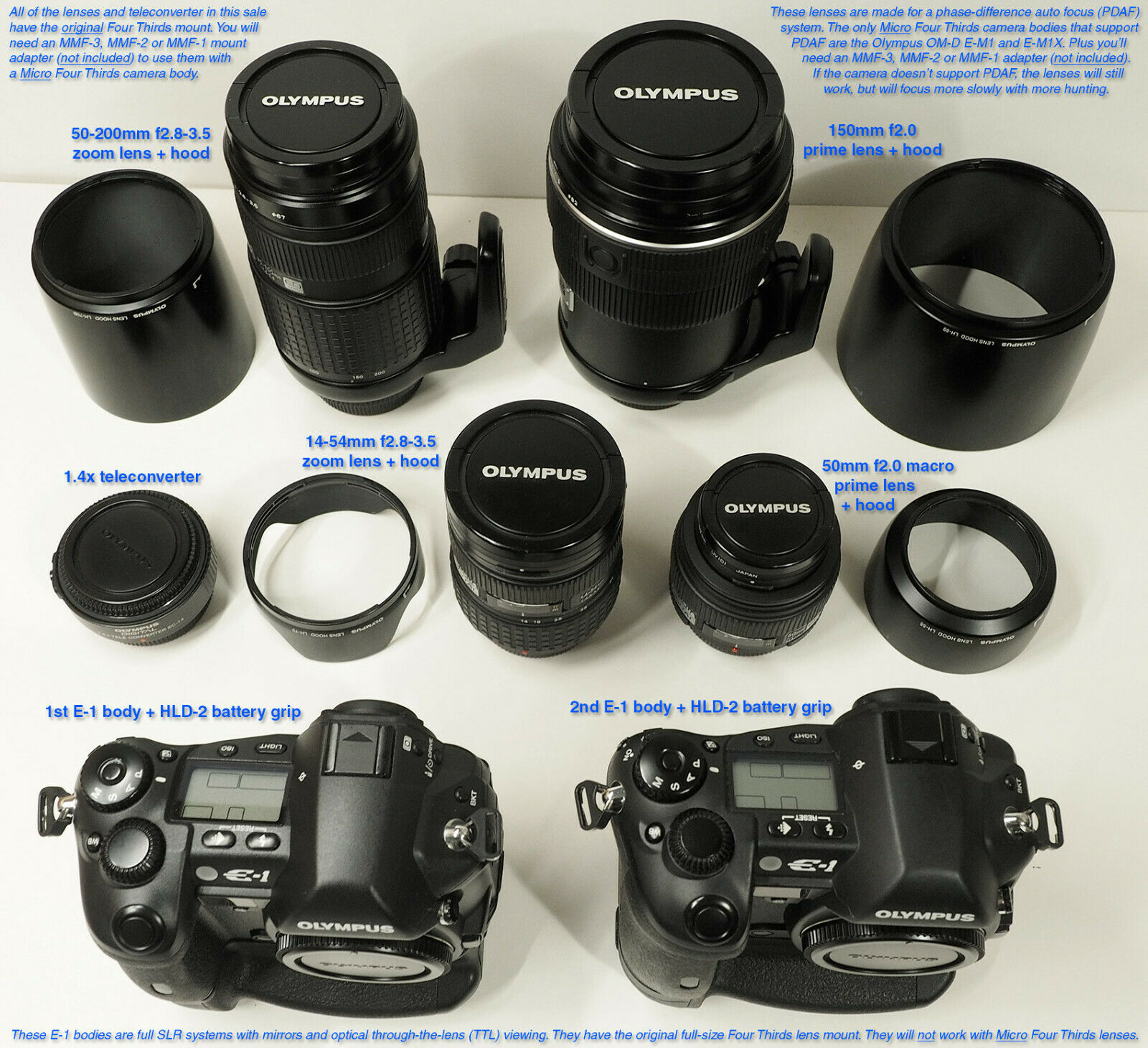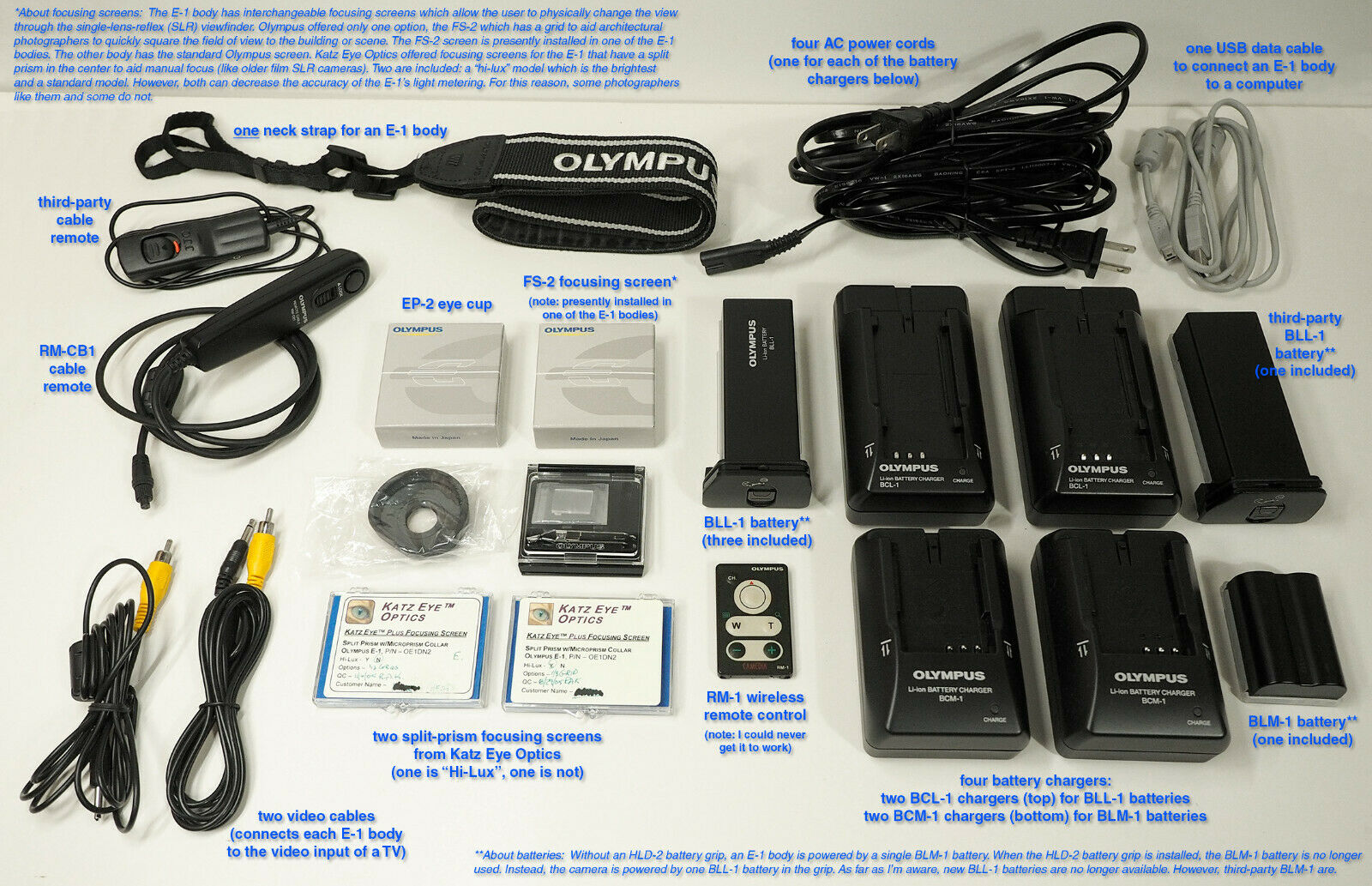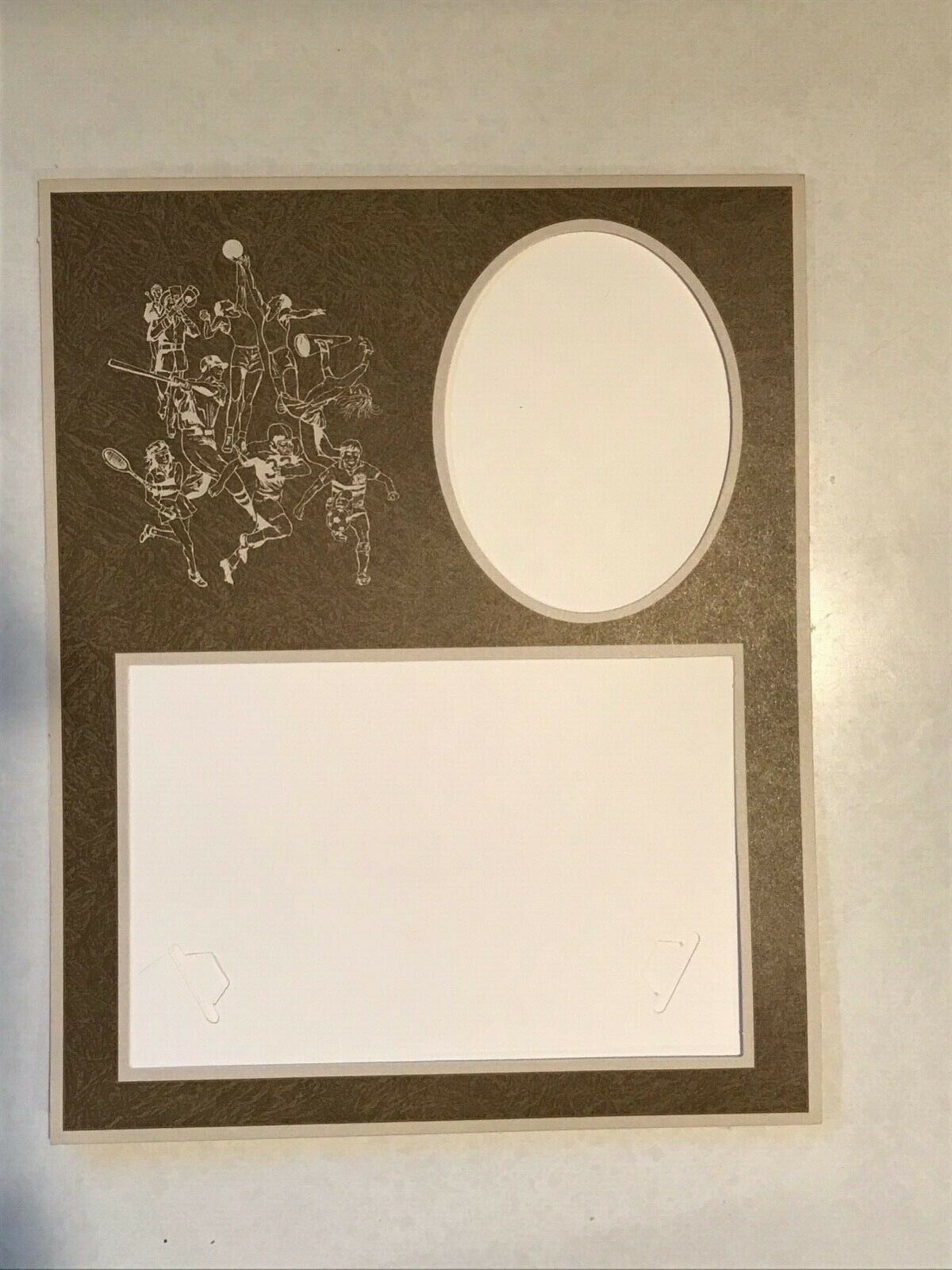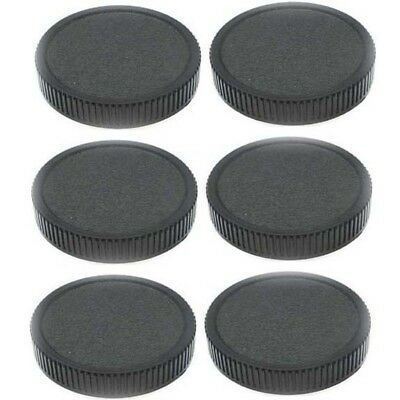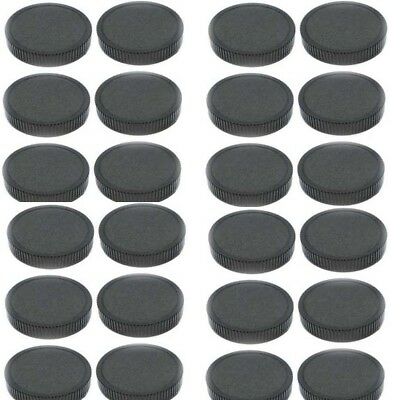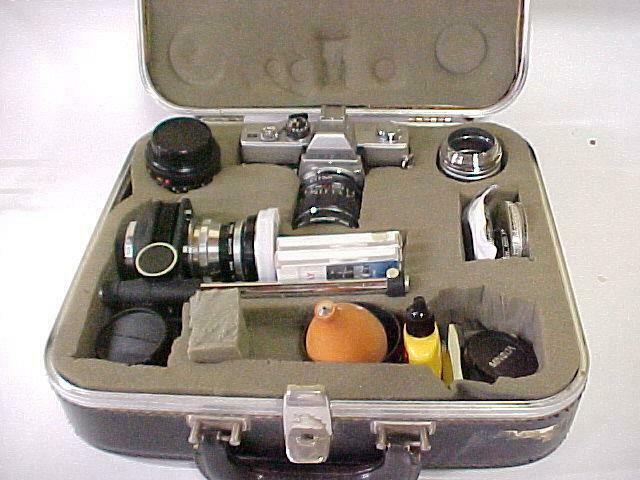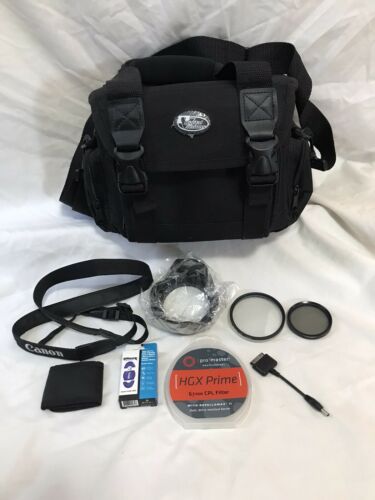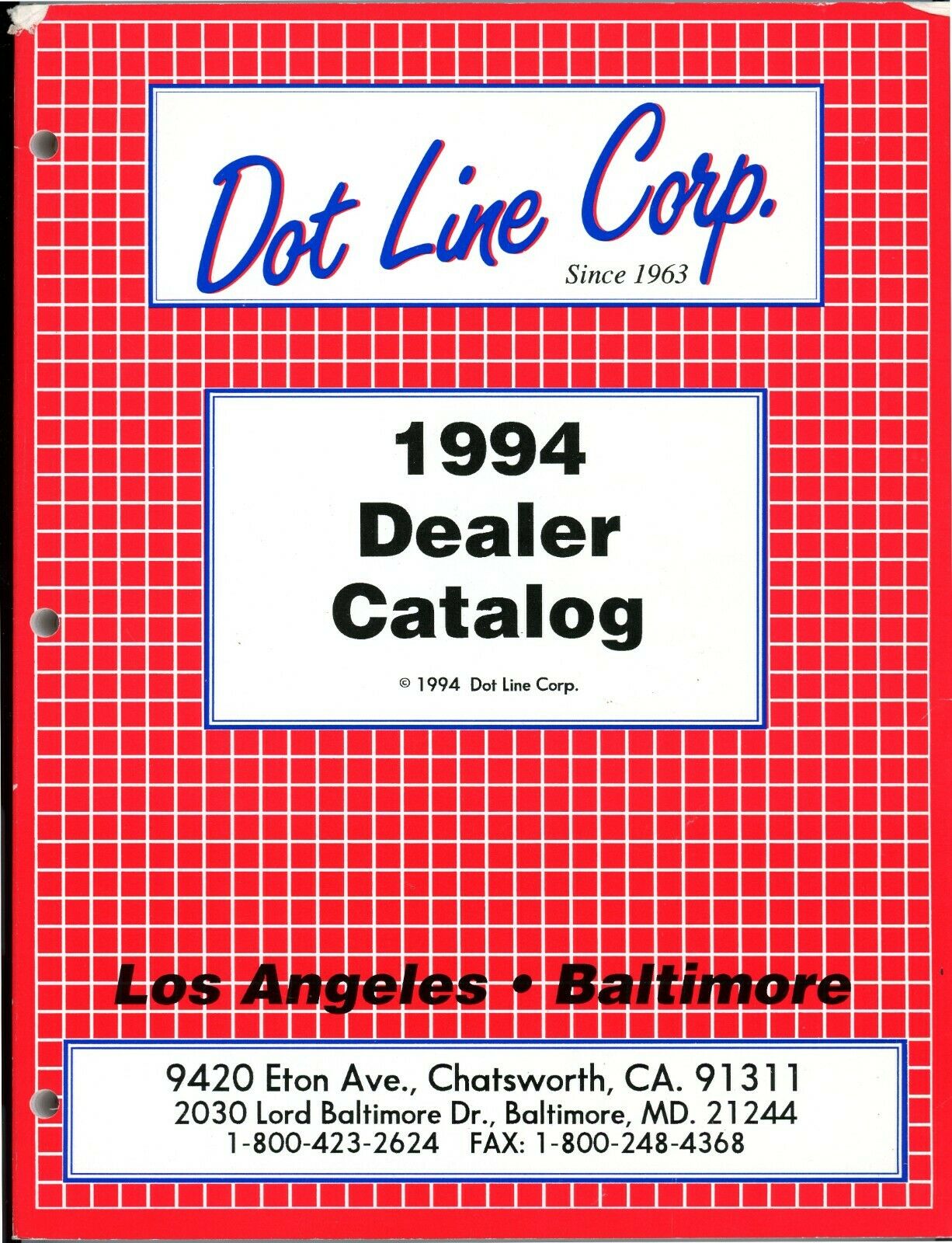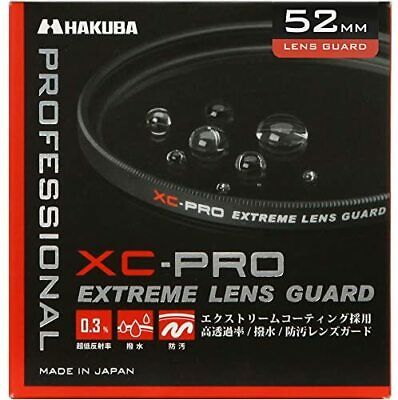-40%
Olympus Zuiko Digital Four Thirds Kit: 150mm f2 + 3 Lenses, 1 Tele, 2 E-1 Bodies
$ 1319.47
- Description
- Size Guide
Description
For Sale:My entire Olympus Four Thirds digital SLR camera kit. There’s a lot of good stuff here: four high-quality lenses with big apertures (like my gorgeous 150mm f2.0 with creamy-smooth bokeh), a versatile EC-14 1.4x teleconverter, two E-1 camera bodies with HLD-2 grips and extras like custom split-prism focusing screens, cable shutter releases, batteries, chargers, connector cables and more. Everything is shown in my two group photos and the seven photo montages that accompany this eBay ad.
If you have questions, please get the answer before initiating a purchase. I’ve tried to provide detailed descriptions and lots of information in this ad. So, kindly read it first to see if your question is already answered here. The items in this sale are offered “as is” and this sale will be final—no returns will be accepted.
Continental U.S. only
I’m limiting buyers to only the continental U.S. because of the shipping. The package will be heavy (25-30 lbs) and will contain five lithium ion batteries. The batteries prevent the package from being shipped via air. It will need to be shipped via ground and I have arranged to use the United Parcel Service (UPS). And, because of the value of the contents, a signature will be required for delivery. You will need to arrange for someone to be home to sign for and accept delivery. UPS estimates that it will cost me 0 to 0 to ship this package. So my offering free shipping is not a trivial matter. I’ll be packing each component very carefully to insure that they arrive safely.
This is original Four Thirds equipment
Important:
Both E-1 camera bodies, all four lenses and the teleconverter are made for the
original
Four Thirds mount. The camera bodies will
not
work with
Micro
Four Third lenses. However, all four lenses and the teleconverter have been tested and work fine with a mirrorless Micro Four Thirds camera body if you obtain a mount adapter. The best adapter is the Olympus MMF-3 because it is weathersealed and durable. However the MMF-2 and MMF-1 work fine, too, but they are not weathersealed.
No mount adapter is included in this sale
. If you plan to use these lenses with a Micro Four Thirds camera, you must obtain your own adapter. I also recommend that you read my section titled “Advice about PDAF lenses” near the end of this ad for additional information so you can make a wise and informed decision.
Here’s what I’m including in this sale:
One Olympus Digital
150mm f2.0 lens
in
excellent condition
with both end caps, LH-89 lens hood, and removable tripod mount. It also includes an 82mm Hoya HMC Super UV filter. This is my favorite lens and it still looks and works like new. It can focus as close as 1.4 meters (4.6 feet), giving it macro-like capability. And it includes advanced features like freeze-focus buttons at the front (to halt autofocus) and a focus range limiter on the side (to limit the focus range to farfield, fullfield or nearfield).
One Olympus Digital
50-200mm f2.8-3.5 zoom lens
in
good condition
with both end caps, LH-70B lens hood, and removable tripod mount. This is my second-most favorite lens and a real workhorse. It does not have a filter (because I used it primarily for low-light shooting). It has a small scuff mark in the coating near the edge of the front lens element (see the photos). The scuff mark is not visible for most use. Also, when the lens is extended fully to its 200mm focal length, and you grasp the front of the lens, you can make the zoom barrel wobble a little. But this has never affected its operation. Functionally, it has always worked flawlessly for me.
One Olympus Digital
50mm f2.0 macro lens
in
excellent condition
with both end caps, and LH-55 lens hood. It also includes a 52mm Hoya HMC Super UV filter. This is, by far, one of the best portrait lenses I have ever used. And its macro capability is very handy, making it a versatile lens.
One Olympus Digital
14-54mm f2.8-3.5 zoom lens
in
excellent condition
with both end caps, and LH-70 lens hood. It also includes a 67mm Hoya HMC Super UV filter. This is probably the #1 “walking-around” lens.
One Olympus Digital
EC-14 1.4x teleconverter
in
excellent condition
. It converts the 150mm lens into a 210mm f2.8. And it converts the 50-200mm zoom into a 70-280mm f4.0-5.6.
Two Olympus
E-1 digital camera bodies
, each with an attached
HLD-2 battery grip
. These camera bodies are from 2003 and are in
very good condition
. One has a stock FS-1 focusing screen, the other has an FS-2 focusing screen with grid lines. Their mechanical shutters are rated for a lifespan of 150,000 actuations each. One has fired 29,670 times and the other has fired 24,219 times (see the photos). Each camera has a 5 megapixel image sensor. Both cameras include all their caps, except for one missing cable release port cap.
One
FS-2 focusing screen package
is included. It contains the focusing screen installation tool and the original FS-1 screen that was removed when the FS-2 was installed.
Two additional
focusing screens
are included. They are both split-prism models from Katz Eye Optics and are designed to aid manual focus when using older manual-focus legacy lenses with the cameras. One is a “Hi-Lux” model. The other is a normal lux model.
One original
Olympus neck strap
is included. It is in
excellent condition
.
One
EP-2 eye cup
is included. It is in
very good condition
.
Two
cable remotes
are included. One is a genuine Olympus
RM-CB1
. The second is a third-party model.
One
RM-1 wireless remote
is included. However, I have never been able to get it to work with either E-1 body.
One
USB data cable
is provided. It connects an E-1 camera to a computer so you can upload image files.
Two
composite video cables
are included. Each one allows you to connect an E-1 camera to a television so you can show standard-definition (SD) copies of your photos to a group.
Five
rechargeable lithium ion batteries
are included. There are 3 genuine Olympus BLL-1 batteries and 1 third-party BLL-1 battery. And there is one genuine Olympus BLM-1 battery.
The batteries will take some explanation
. First, all of them are old and I cannot promise that any of them work. All I can report is that I recently placed two of the genuine Olympus BLL-1 batteries in their chargers and they appeared to charge. And I was able to turn on the cameras with them and take photos. But I do not know how long they will work. Frankly, it’s amazing that they still work (a testament to Olympus’ quality). Each of the two BLL-1 that I tested will be shipped installed in a camera. The other two BLL-1 have not been tested. Second, new BLL-1 batteries are no longer available. Third, I have never used the BLM-1 battery and have no idea if it works. My primary reason for including it is so you will know what one looks like. New BLM-1 batteries are still available today from third-party suppliers (which means you could use the cameras without their HLD-2 grips). Fourth, please see my “About the batteries...” section below for more information.
Four
battery chargers
are included along with their respective AC cables. Two are BCL-1 chargers which each charge a single BLL-1 battery. The other two are BCM-1 chargers which each charge a single BLM-1 battery. These are the genuine Olympus chargers which are slow to charge—but this is good because they are “smart” chargers that coax the maximum life out of each battery. I recommend using them instead of any third-party “fast” charger.
Nothing else is included in this sale.
No
memory cards,
no
lens cases and
no
storage bags are included. Everything in this sale is shown in the photos—please study them for more details. Many of them have additional notes and comments. The photos show the actual items being offered in this sale.
Weathersealed and rugged...
Both E-1 camera bodies, their HLD-2 battery grips, all four lenses and the teleconverter are weathersealed. This entire kit is suitable for outdoor use in light rain. I rarely exposed the cameras or lenses to precipitation, but it was reassuring knowing that they could handle it when needed. Plus the cameras and lenses are very rugged. If I remember correctly, the camera bodies are made of a magnesium alloy (there is almost no plastic). The lenses all have metal bodies and mounts, but I believe the zoom barrels of the two zoom lenses are plastic.
About lens focal length...
Because a Four Thirds image sensor is approximately half as tall and half as wide as a 35mm-equivalent full-frame image sensor, all Four Thirds (and Micro Four Thirds) lenses have the same fields of view as a 35mm film lens with
twice
the focal length. So my 150mm lens is like a 300mm lens on a full-frame camera. My 50-200mm zoom is like a 100-400mm zoom on a full-frame camera. And so on. This was one of the major reasons why I chose the Four Thirds system (and why I’m using the Micro Four Thirds system today)—it takes half the focal length to get the same reach as a full-frame camera lens. This translates to smaller and lighter lenses. My 150mm f2.0 lens looks big and heavy, but it’s not nearly the size, weight or price that an equivalent 300mm f2.0 full-frame lens would be for a full-frame camera body from Canon, Nikon or Sony.
About the batteries...
When you remove the HLD-2 battery grip from each E-1 body, each camera is powered by a single 1500 mAh 7.2V BLM-1 battery. BLM-1 batteries are still available today from third-party sources. However, if you want to use the HLD-2 battery grips and their vertical controls, you must remove the BLM-1 battery and, instead, use a 3400 mAh 7.2V BLL-1 battery inside the grip. Since the BLL-1 has more than twice the capacity as a BLM-1, they enable you to shoot more than twice the number of photos on a single charge. So the BLL-1 is the preferred battery. Unfortunately, no one makes the BLL-1 battery any more.
The reason I’m including
four
BLL-1 batteries is so you can use them as long as they will allow. And because you may be able to have them rebuilt by a skilled technician at a battery repair center. You see, most lithium ion batteries contain standard cells inside and it may be possible to have the cells replaced. In that case you’ll be good to go for several years with like-new batteries. As far as I’m aware, no other camera and no other camera accessory ever used the BLL-1. Olympus apparently designed it for the HLD-2 and never used it for anything else. So they are kinda rare today. Therefore, these four BLL-1 batteries may be valuable as rebuild options.
Advice about PDAF lenses
The original Four Thirds system was designed with a Phase-Difference Auto Focus (PDAF) technology and all of the original Four Thirds lenses are engineered for a camera body that uses PDAF. The PDAF system is unique in that it instantly tells the camera how far out of focus a lens is and which direction the focus needs to go. In other words, the camera knows whether the lens is focused too close or too far and can move the correct direction in fewer steps to achieve focus. This means the lenses in this sale are designed to quickly jump in large steps to the focus point. This makes PDAF the best for live-tracking a moving subject. But it also makes them noisier and less suitable for live focus-tracking during video recording. This is because the focus steps are large enough to create a jerky video motion and the increased noise can be picked up in the microphone. So these lenses are best for shooting still photos or fixed-focus video—not follow-focus video.
Furthermore, many of the mirrorless Micro Four Thirds camera bodies do not have PDAF. Rather, they use a Contrast Detection Auto Focus (CDAF) technology because it is a better match for the video recording capability of the newer cameras. Unfortunately, cameras that use CDAF have less information about the state of focus. They do not know how far out of focus the lens is. Nor do they know which direction the lens is out of focus. So they must use a trial-and-error method by making multiple quick and short focus steps to determine which direction to move the focus of the lens. And they must keep making these tiny steps until they arrive at the focus point. Normally, CDAF would be slower than PDAF, but the motors used to move CDAF lens elements in tiny rapid steps have advanced very much. They are now very fast and, because they take such tiny steps, they are more quiet than the motor systems inside PDAF lenses (especially Olympus Digital Micro Four Thirds lenses marked “MSC”). This results in smoother follow-focus during video and quieter operation that works better for audio recording during video.
Can you use the PDAF lenses in this sale with a newer Micro Four Thirds camera if it only has a CDAF system? Yes, as long as you obtain an MMF-3, MMF-2 or MMF-1 mount adapter (or equivalent). These PDAF lenses will autofocus with a CDAF Micro Four Thirds camera, but they will be a little slower and may hunt a little more. If that’s acceptable, then you’ll have the advantage of some extra sharp, very bright and very high-quality lenses.
Plus, all four of the lenses in this sale have manual fly-by-wire focus rings. This enables you to manually adjust the focus of each lens, when desired. You can configure some camera bodies (like the OM-D E-M1) to use both autofocus plus manual focus override. The lens will autofocus until you begin to rotate the focus ring, then it will give you full control from that point on. If desired, you can configure the camera to automatically enlarge the image in the viewfinder and display focus aids when manual focus override is activated. This increases the ease of manual focus when you need it—especially in low light. So these original Four Thirds lenses can work very well with some of the new camera bodies and still offer advanced features. The 150mm f2.0 lens is a special case. It includes freeze-focus buttons at the front and a focus range switch on the side. Pressing the freeze-focus buttons will halt autofocus until they are released. And the focus range switch allows you to limit the depth of field of the lens to farfield (infinity to 4 meters), fullfield (infinity to 1.4 meters), or nearfield (4 to 1.4 meters).
Thankfully, there is a better solution for PDAF support with Olympus cameras. Olympus, wanting to make the fastest autofocus system for wildlife and sports photography, created a hybrid system by combining both CDAF and PDAF into the same camera body. The first model with this dual autofocus system was the original OM-D E-M1 introduced in 2013. It works like this: When you are shooting with a Micro Four Thirds lens (all Micro Four Thirds lenses are designed for CDAF), they will use CDAF until you switch to live focus-tracking, then they combine CDAF and PDAF to enable some of the best live-tracking of any camera. However, when you switch to shooting video, PDAF is disabled and only CDAF is used.
What happens when you connect one of the older PDAF lenses in this sale to an OM-D E-M1 camera body? Answer: First, you still need an MMF-3, MMF-2 or MMF-1 mount adapter (or equivalent). Second, the E-M1 senses that you’ve mounted a PDAF lens and it automatically switches to full-time PDAF mode. This will disable live focus-tracking during video but, for still photos it is excellent. In my experience, the PDAF system in the E-M1 offers similar performance as Olympus’ earlier E-1, E-3 and E-5 digital SLR camera bodies. Therefore, the E-M1 provides an excellent upgrade path for shooters with original Four Thirds glass.
Olympus continued to provide this dual CDAF + PDAF system in the E-M1 successors, including the E-M1 Mark II (2016), E-M1 Mark III (2020), and the E-M1X. So, if you want to use these bright lenses with their original Four Thirds mount, one of the OM-D E-M1 or E-M1X camera bodies is the ideal. Just remember: You still need an MMF-3, MMF-2 or MMF-1 adapter (or equivalent) to convert from the original Four Thirds mount of the lens to the Micro Four Thirds mount of the camera body.
Why am I selling?
I switched to an OM-D E-M1 and HLD-7 battery grip last year and plan to transition fully to Micro Four Thirds to lighten my load and better accommodate video. I’ve used all of these lenses and the teleconverter with my E-M1 via an MMF-3 mount adapter and each one worked flawlessly. And I made sure that all of the lenses have the latest firmware installed—they do.
Am I willing to divide the kit and sell components individually?
Not really. If you don’t want everything in this kit, you’ll need to buy the entire lot and sell the parts you don’t want to keep, yourself. The jewel of this kit is undoubtedly the 150mm f2.0 lens. A relatively small number were made and mine looks and works like new. It could probably be sold alone for half my asking price (one recently sold on eBay for 87). It’s also the lens that I most want to keep. So, if that’s all you want, you’ll have to buy everything to get it. If no one buys the kit and I’m forced (at some point in the future) to sell the pieces separately, I’ll probably save the 150mm f2.0 for last and may not sell it at all because there is no exact equivalent Micro Four Thirds lens.
